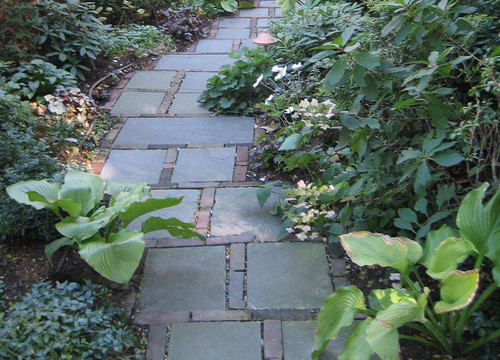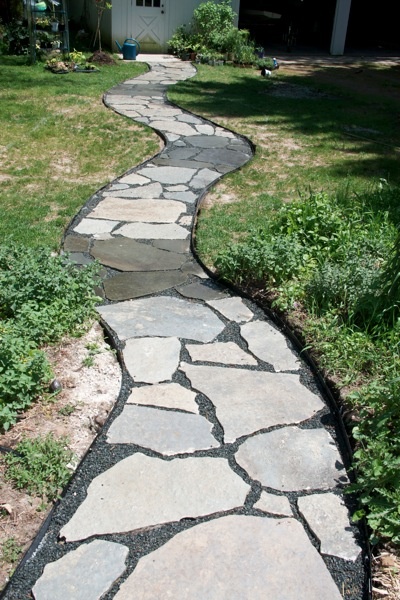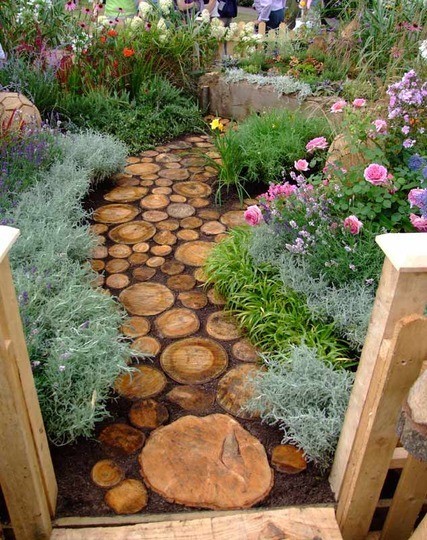Garden tasks to pass the time
I was surprised and so honored that John and Sherry from the fabulous Young House Love blog (and New York Times bestselling book) featured our house renovation on their blog yesterday. I loved reading people's comments about it and I'm happy that some people found a little inspiration in it.
I know I'm not the only frustrated gardener out there chomping at the bit for spring. Winter is hanging on a bit long in many parts of the country. So to help us all out of our funk, I thought I'd share a few things you can do now to get ready for gardening. Some of these things depend a bit on what part of the country you're in, but up here in zone 5b we're among the last for spring to show up so there's a good bet that you should be on this schedule or ahead of it.
Prune SOME shrubs
The some is key here. You do not want to prune spring blooming shrubs now because they have already set their buds and you will cut off your flowers. The key is finding out if a shrub blooms on "new wood" (stems that grow this year) or "old wood" (stems from last year or before). Some of my favorite hydrangeas like 'Limelight' can be pruned to whatever degree is necessary. They don't need to be pruned though (other than removing dead wood). I should have pruned my Limelights in late February or early March but I just never did. This weekend I'll put on my boots and stomp through some snow to do a light pruning (nothing like I did a few years ago). The less you prune, the bigger the flowers will be, so keep that in mind. I will just prune the big Limelight by about a third just to keep it in check size-wise. The new Limelights along the deck will just be slightly pruned to shape them a little as they are still growing.
 |
| Have no fear, just a few months after pruning, 'Limelight' will be looking like this. |
 |
| The purple foliage of a smoke bush with the pink bloom of clematis 'Princess Diana', which grows up its branches in my garden. |
Although I add kitchen scraps to the compost pile all winter, I do let it go dormant during winter. I just bought a compost thermometer (I am oddly excited about this purchase) and found that my pile is currently 32 degrees. I don't think anything is decomposing at that temperature.
As soon as it is workable (and, um, not covered in snow), I will start stirring the pile, adding water if it is too dry. Because I put a lot of well chopped up leaves and yard waste in the pile during our fall cleanup the pile always comes into spring a bit heavy on the "browns" (high in carbon). I kick-start in spring by adding well moistened alfalfa cubes. Alfalfa is very high in nitrogen so really balances things out and getting things decomposing again. I buy a bag of alfalfa cubes at the feed store about once every three years and soak them well in a five-gallon bucket so they break down a bit. Then I pour them into the compost, stir well and within a few days I usually have steam rising from the pile. There is something so incredibly satisfying about making the best thing for your garden. My problem is that there is never, ever enough compost.
Plan your vegetable garden
Ideally you will grab a piece of graph paper to do this, but I'll be honest and tell you that I usually end up doing it on a piece of scratch paper while watching television, but that's because I know from previous years about how much space I need for various things. Just putting it on paper helps a lot. Remember not to plant your tomatoes in the same place every year if you can at all help it. They say it's best to alternate between three different places but I just switch the tomatoes from one side of the raised bed to the other every year. It helps to know how much space things need to grow but keep in mind that you can plant much more intensely if you have very good soil enriched with a lot of compost. That's the theory I subscribe to. Make the soil as good as you can and then stick a lot of veggies in there. You can also plan out where you'll be switching things out. For instance, I always place my cucumbers and my peas in the same spot because the peas are usually done by the time it's time for the cukes to be planted.
Finish your clean up
If you're like me, sometimes you don't get to everything that needs cleaning up in fall. I prefer to leave some things, like perennial grasses, standing for winter interest. It's important to chop off the dead foliage on these as soon as possible (mine are still under snow, but I will do it the second I can get to them). The problem with spring clean up is that you have to be careful about walking in your beds. The last thing you want to do is compact your soil when it is sodden. If I have to step in beds I try to do it in one step instead of tromping all over the place and then I use a rake to reach in and pull out any material I've cut down.
So all is not lost as we wait for spring to arrive!
Speaking of spring, don't forget about the Grand Garden Show on Mackinac Island this summer (check out some of the details here). They now have the website for the event up and complete and I'm absolutely thrilled to see that Stacey Hirvela of Spring Meadow Nursery and Susan Martin of Walters Gardens have joined the line-up. I heard Stacey speak back when she was working at Martha Stewart Inc. and it was memorable.
Jack Barnwell also tells me that he's got all the private garden owners signed on for tours as well and I can assure you this will be a spectacular opportunity that is probably a once-in-a-lifetime thing.
Anyway, check out the website for more info or you can call Karen at 906-430-1206 or email her at mackinacgardenshow (at) gmail.com if you want to ask some specific questions.
Labels: barnwell, compost, great garden show, hydrangeas, mackinac, pruning, spring, vegetable garden




















































